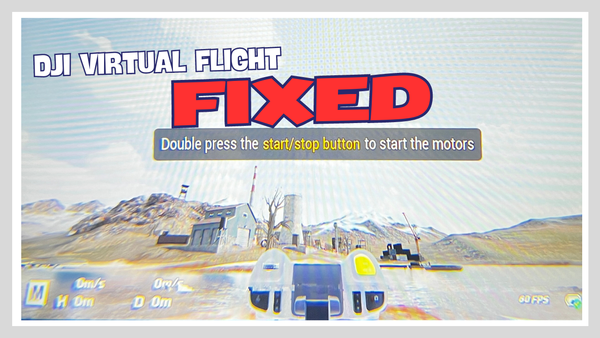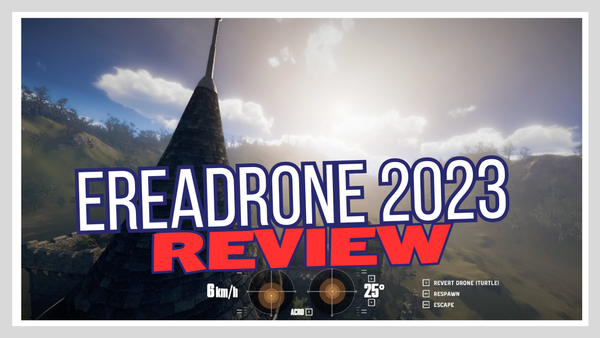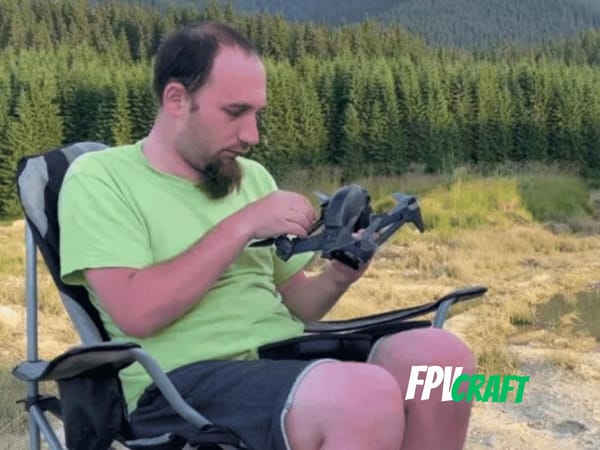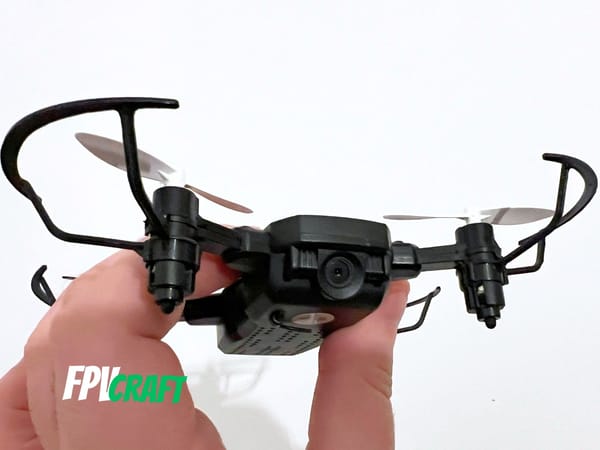What is the Best DJI Avata Camera Angle?
To fly DJI Avata in manual mode, you will have to set a specific camera angle to reach different speeds. What's the best one?
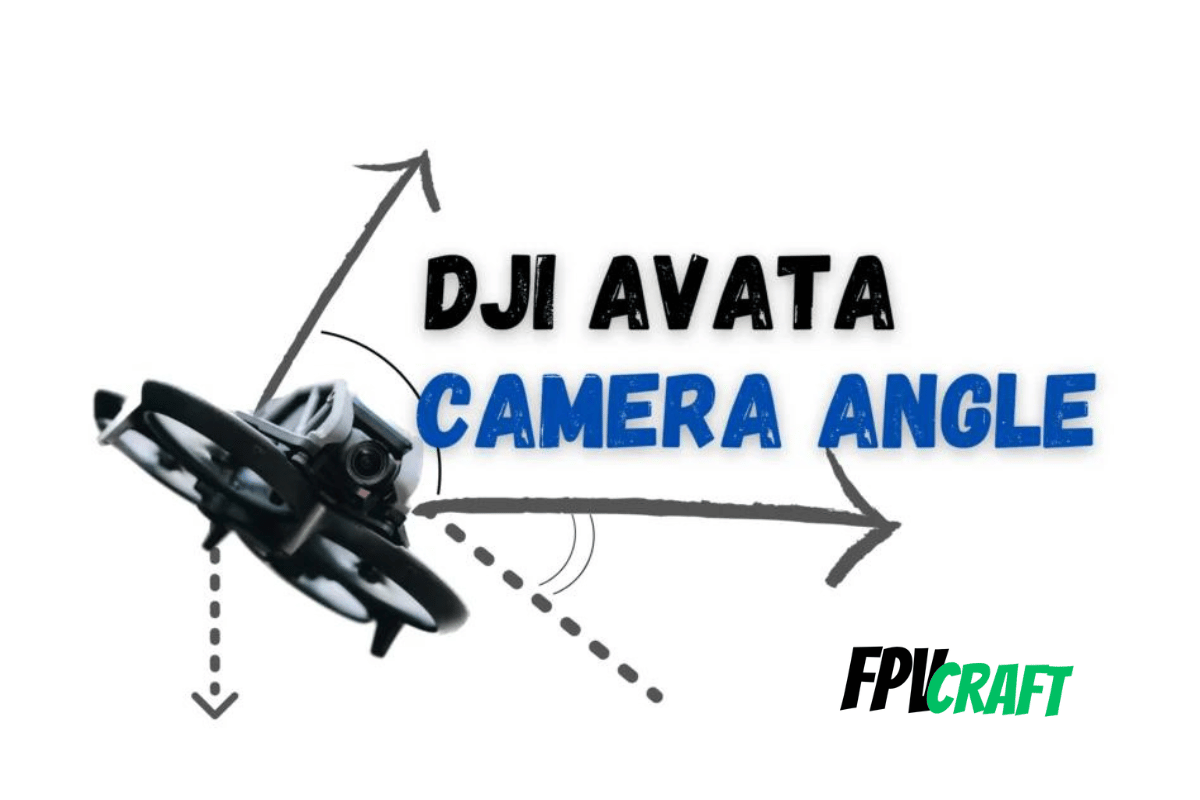
To fly an FPV drone in manual mode or acro, you have to set a specific camera angle for a distinct speed for different types of flights. But what is the best DJI Avata camera angle to use?
If you are looking for slow cinewhoop flights, a camera angle under 10 degrees is a good choice. In contrast, I always recommend setting Avata’s camera angle to about 15 to 20 degrees for free-roaming, whereas for faster cinematic cruising is best to fly DJI Avata at around 25 degrees camera angle.
But there may be a few more things to know and understand why we recommend these camera angles to use with DJI Avata, why FPV drones require specific camera angles, and other recommendations.
DJI Avata camera angle – what is the best one to use?
There is no such thing as the best camera angle neither for DJI Avata nor any FPV drone.
Each camera angle will have different meanings and flight uses and will be impacted a lot by the pilot’s flight style.
But we have to set a specific camera angle to be able to fly DJI Avata in manual mode. So, what are the best, anyway?
I found out after testing, asking, comparing, and researching as much as possible that the following camera angles tend to be the best for flying DJI Avata in manual mode:
- For slow cinematic (cinewhooping) mode, including indoor flights, slowly exploring, and filming, setting DJI Avata at 10 degrees and under camera angles seems to be the best choice.
- For free-roaming outdoors and still maintaining slow cinematic speed with the possibility of better control between a hover point and accelerating to higher speeds, a 15-degree camera angle on your DJI Avata seems to be a fantastic choice.
- Flying the DJI Avata at higher speeds and faster cinematic is fantastic for choosing a camera angle of around 25 degrees.
ACTIVE FPV, well-known for flying many cinematic FPVs with the DJI Avata at higher speeds, uses a camera angle to fly between 22-28 degrees.

We can look at one of his videos to see how the DJI Avata responds to fly at this specific higher camera angle.
Setting the DJI Avata camera angle in manual mode.
When you change your DJI Avata from normal or sport modes to manual mode, this enters an acro modality to fly where the camera angle changes from what is set on normal mode to a specific one (last set) on manual mode.
Flying DJI Avata and any other drones with a camera angle set towards zero degrees, you are flying slowly towards hovering; while increasing the camera angle, you fly faster and faster, but it is trickier to keep focus and have good reaction times, or you risk crashing your drone.
Moreover, please remember that you will need at least basic FPV skills to fly DJI Avata in manual mode, especially in ACRO MODE.
How do you set your DJI Avata camera angle?


- You have to trigger “manual mode” from your DJI FPV Remote Controller 2 back button – this will activate only if you have unlocked manual mode as a custom button, otherways it will remain stuck on sport mode; therefore, you cannot set manual mode camera angle for your DJI Avata.
- If you are in manual mode with your DJI Avata, the next step is to adjust using the cogwheel on the left side of the remote controller. Please do NOT set the camera angle on negative degrees (tilted down) and only on positive degrees (tilted up).
Do you also have to set the camera angle for DJI Avata in normal mode?
Setting the camera angle when you are in normal or sport mode to your DJI Avata will not impact the camera angle set in manual mode, nor will it change it in any way.
For instance, we tend to tilt down the camera angle when we fly a standard drone, for example, to (minus) -45 degrees, where we observe what is underneath us.
But the camera will be tilted up when we set the camera angle for your DJI Avata on positive (plus) degrees.

DJI Avata Pro-View Combo (DJI Goggles 2)
- Experience the Thrill of Flying: Enjoy total immersion and intuitive control with DJI Avata. When you combine Avata with the goggles and motion controller, flight becomes accessible to all.
- DJI Avata also provides Ultra-Smooth 4K Footage
- Palm-Sized and Agile with DJI O3+ Video transmission
- Change the Way You Fly: DJI Avata is compatible with DJI Goggles 2, DJI FPV Goggles V2, DJI FPV Remote Control 2, and DJI Motion Control, which each unlock different possibilities.
- DJI Goggles 2 and DJI Motion Controller provide an immersive sensory experience with intuitive control by hand and head movements.
This is an affiliate link. We earn a commission if you make a purchase, at no additional cost to you.
This will be challenging if you want to fly in normal or sport modes and set such uptilt angles.
That is why, whenever you go from normal or sport modes to manual mode on your DJI Avata (hence, DJI FPV acts the same), the camera tilt jumps from the angle set on your normal/sport modes to the one set on your manual mode.
Please ensure nothing will obstruct the DJI Avata gimbal at this time.
What are standard FPV drones’ camera angles?
I created a while back an entire article related to FPV drones camera angles, and I keep updating it regularly with new and accurate information and new data to add. You can find the post below:
» Related: What Is the Best Camera Angle to Fly Your FPV Drone
But up to that point, let’s have a better understanding of why we have to choose specific camera angles for different flight styles
- 0-degree camera angle: It is an “experimental” way, whereas the sticks centered with no adrift should hover the drone while the horizon line remains in the middle of the screen.
Pitching forward will adjust the speed accordingly where the horizon line goes, and backward may allow you to fly backward for a bit.
Flying DJI Avata at a zero-degree camera angle should give you the slowest flight possible, which is fantastic if you fly indoors in small spaces, want to get through some challenging gaps, or in areas where you need to have easy control over all directions.
But always be aware that controlling DJI Avata or any FPV drones at a 0-degree camera angle is going to be a real challenge, and even myself I struggle after dozen hours of practice in liftoff at a zero-degree camera angle.
But it is probably one of the most rewarding flight styles that can set your flight apart, it has unique control over the Avata and transits between hover and flying forward at different rates.
- 5-15 degrees camera angle: it is a fantastic choice to fly DJI Avata slowly and cinematically and have smooth flight transitions in different scenarios.
Flying the DJI Avata or any FPV drone between 5 and 15 degrees’ camera angle promotes the type of slow cinewhoop flights, whereas DJI Avata is a cinewhoop FPV drone.
Probably is one of the best angles to fly DJI Avata slow, indoors, with slow cinematics and so on, is to keep up to 15 degrees camera angle in manual mode.
I fly a lot at 15 degrees many drones, and I always find out to be one best angles to control a drone at different speeds, from hovering to rates equivalent to 30+ degrees, depending on my stick control.
- 15-20 degrees camera angle: You get to fly your DJI Avata faster than before but still maintain a balance between smoothness and equilibrium. It is best recommended to fly in spaces with open larger areas.
- 20-30 degrees camera angle: in this case, we are looking to fly DJI Avata at high speeds and faster cinematic flights, and you need to know to fly well and have reasonable control of the drone to minimize the risk of crashing.
For instance, we mentioned before that ACTIVE FPV flies between 22 and 28 camera angles. I always found that flying Avata at around 25 degrees long range could be ideal for creating unique cinematic videos with this drone.
- 30+ degrees: we never recommend flying DJI Avata at speeds where you set the camera angle higher than 30 degrees. Even up to this point, I consider this angle very high for a cinewhoop drone.
Flying cinewhoop drones, in special DJI Avata, induces the risk of tumbling, crashing, and unstable flight experiences, mainly if you fly DJI Avata in high winds.
Therefore, always be aware of the camera angle you set when you want to fly your DJI Avata in manual mode and as compared to DJI FPV, where I love to fly fast and far with high tilt camera, DJI Avata is the opposite where you need to think of flying slow, closer and smoother.
Can you train in simulators before testing these camera angles on the DJI Avata?
Yes, absolutely. This is the most recommended way to start before flying any FPV drones.
I mainly use Liftoff Simulator to practice FPV on a daily basis when I cannot fly outdoors because of the weather and current location.
You can practice flying at different camera angles in the liftoff simulator and see which is the best for you and fits your DJI Avata flight style.
Sadly, there is no DJI Avata in Liftoff Simulator at this time, but we do have DJI FPV, which we can associate a bit better than with custom FPV drones.
» Related: What is the Best Liftoff Simulator Camera Angle to Learn FPV
What else must we know about the DJI Avata camera angle to use?
- It is imperial to remember that DJI Avata is a cinewhoop drone manufactured to fly at slower flight speeds, indoors, between people and objects, and to promote safer flights. For this, DJI Avata should always be considered to be flown at slower speeds / lower camera angles.
- DJI Avata is an FPV drone, and if you somehow missed the information where we urge anyone to train first time in simulators before flying in manual mode outdoors, please do it. You will likely crash your drone if you want to fly your DJI Avata with no FPV experience in manual mode (or acro mode).
- Although DJI Avata is quite resistant to some impacts, the camera is not and is exposed where you can risk damaging it on a frontal crash.
- There is no general rule to fly DJI Avata at specific camera angles in manual mode, merely guidelines to follow for enjoying the best flight experience with Avata.
» Related: What is the Best Camera Angle for a Cinewhoop Drone?

